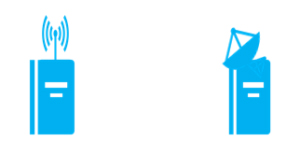Enterprise application integration is lot like the evolution of most garages – they did not look so messy when you first started putting things in them, but now you don’t even want to think about cleaning them up. However, occasionally, we face challenges that do not look like an opportunity at first, like a flooded garage or an OMS implementation.
A major component of an OMS implementation is integration with a lot of different applications. This is an appropriate time to assess your existing application’s integration layer and see if you need a course correction.
- How good is your integration platform?
- Is cloud integration, SaaS, a viable option?
- Is it on the latest, future proof technology that can support cloud, IoT or BI needs that might come up?
- Does the integration platform provide enough value, visibility and reliability?
- Is a peer to peer model the right fit for you? Message Queue? Publish-Subscribe?
Peer to Peer

Message Queue

Publish – Subscribe

Does the legacy integration platform or that one AS-400 application that sticks out like a sore thumb for any modernization efforts in integration work for you? Consider building a reliable, but interim, bridge to bring the legacy application into the technology framework of the future.
How mature are the applications and what kind of data integration changes are you going through in a given time? If you have a high number of touchpoints and your integration landscape has not matured, you should consider something that has more control. Typically, random data access (for BI, ad hoc) and direct database access can be major challenges in cloud-based integration. Based on a range of factors, this might be an acceptable limitation for you.
Are system breakdowns and integration issues common occurrences in your weekly troubles? Does the support team spend majority of their time fixing system integration issues? It might be time to get a solid integration foundation before you begin adding more through OMS implementations.
If you find several crisscross interfaces like an item from ERP, MDM and WMS applications for example, consider publish-subscribe models. Mature, complex systems can often benefit from a standardized object publish-subscribe model more so than legacy point to point integration.
This initiative will give you a much higher chance of success in OMS implementation with reduced risk, streamlined integration tests and smoother support for years to come.
No matter what the current state of your integration is, it does not have to continue to worsen. Use OMS implementation as an opportunity to assess and make required changes to your integration layer. If you would like some help with your analysis, implementation or optimization, contact Bricz at info@bricz.com
Contributor: Mustafa Zeinulabdeen
